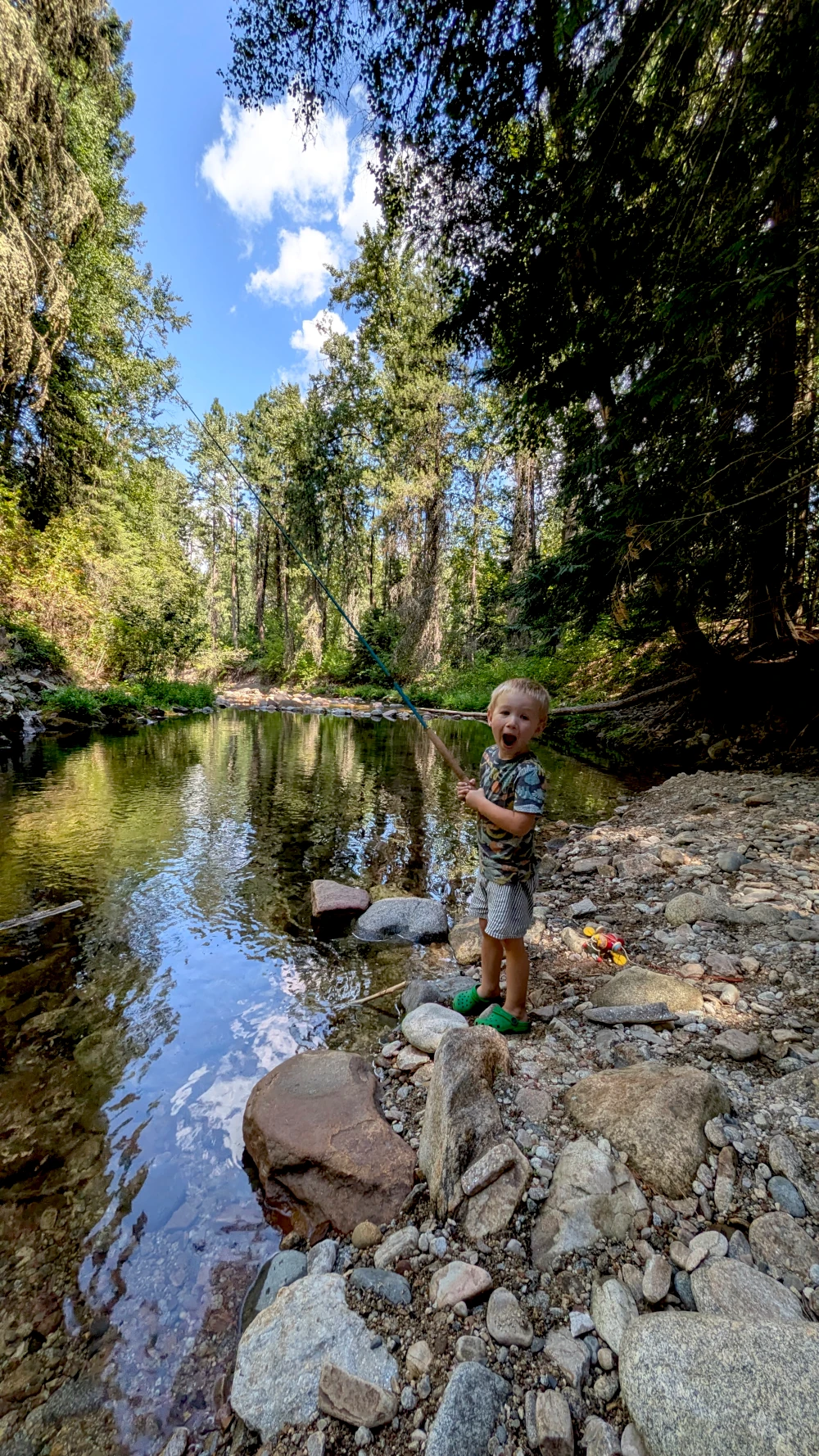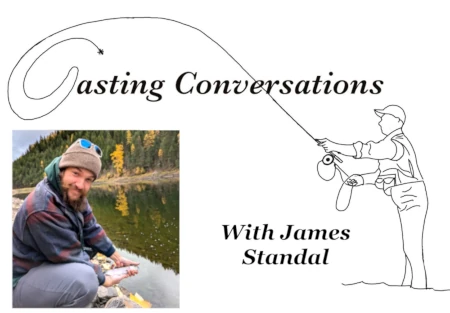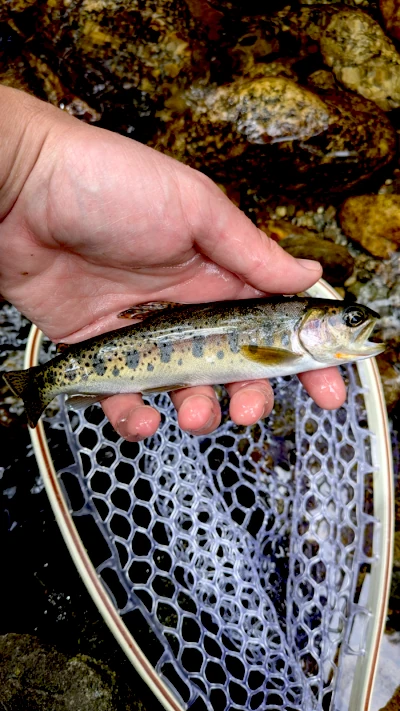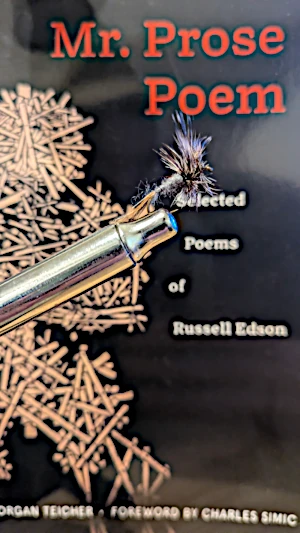
 What a day: hovering around 70 with only a few brush strokes of clouds in the sky. It’s been this way all week, and other than a bit of springtime wind, it has been the perfect conditions for fishing.
What a day: hovering around 70 with only a few brush strokes of clouds in the sky. It’s been this way all week, and other than a bit of springtime wind, it has been the perfect conditions for fishing.
The only issue is I have been stuck at home with springtime chores or stuck behind a desk selling books to people who are heading back out into the beautiful day. Not that I’m complaining; I truly enjoy those things. The only thing I would rather do is go fishing, and I’ll find time for that.
As a working family man, I can’t always get out when I want to. Especially when I run out of good excuses. However, there are still things I can do in the meantime to soften the blow of not having my feet in the river. And I will pass on these suggestions to you, the people, whoever you are, who read my column and enjoy the same things that I do.

First one is the closest you can get to fishing when you have a toddler at home who has not yet connected the dots on much at all, especially the joys behind the sport we all enjoy, is to take your little one(s) out to a lake.
My son is about to turn four, and while he has caught fish, he doesn’t catch them consistently and sometimes(or most of the time) he becomes bored of fishing when nothing is biting ten seconds after his lure has hit the water.
Now here is my advice, and it is advice that I should take myself more often: do not just start fishing on your own at this point. You cannot make a kid love fishing in a day, but you can sure as heck make them hate it. Have patience with the kid. If they get bored and the fishing is slow, do something that they enjoy. Throw some rocks in the water, watch a duck or two eating, try to find some frogs or a crawdad or two.
Teach them something about the outdoors that they will remember the rest of their life.
Don’t force them into doing something that they don’t want to do at that moment, even if you so very much want to land a fish yourself or for them. Kids don’t have much of an attention span, and you do not want to squash any enthusiasm they have for going fishing by forcing them to do just that.
Just enjoy your time outdoors and love the fact that they are having fun without being glued to a screen.
A second thing that you could do when you just can’t get away from the house to the water is to build a couple leaders. Now, I know a lot of people (myself included) tend to go for the easy way out when it comes to leaders: we go and buy a tapered leader from the shop, unravel it as best we can before we inevitably get an annoying knot in it, and then either use the loop to loop connection or cut those stupid things off and tie it on using the classic nail knot.
However, what if I told you that with a little elbow grease and a few materials, it is not too hard to just make your own leaders yourself. I mean, heck, people have been doing it for years and years before they made it more user-friendly.
First, you need a nice butt section for a leader which will make up roughly 60-percent of the length. For a dry fly leader, which is the type I use for 99-percent of my fishing as I highly prefer to cast dry flies, I tend to use a seven foot piece of monofilament (the size of this depends strongly for what line weight I am building for, of course), a two to three foot piece of slightly smaller mono, and then I have room for another two or two and a half foot piece of my tippet I will be using: A simple way to look at this is 60/20/20, give or take. Now for my 5 weight rod, which is my typical choice for trout fishing in the river, my leader looks like this:
- Seven feet of 2x monofilament
- Two feet of 3x monofilament
- One foot of 4x monofilament
- Two to three feet of 5x-6x tippet (dependent on what I am going to fish)
Now, your leader can get more complicated than that, but I tend to follow the mantra of KISS (Keep it simple, stupid).
Now, once again, a tapered leader from the store is easier to do than tying up your own, but just like with tying your own flies, there is something satisfying about tying up your own leader and finding success with it. And this segues perfectly into my third and final suggestion of the week: tie your own flies.
I brushed a bit on this a few weeks back when I was talking about the dreaded mop fly, a simple but effective “controversial” fly. But if that column piece got at least one person to set a hook in a vice and start wrapping fine thread around a small hook, I consider that a success.
In the world of fly fishing, not much is better than landing your first fish on a fly that you tied yourself. It can look a bit intimidating to tie your own flies, both in terms of the price for everything you need and the actual act of tying in itself. And I will address both of these points.
Firstly, yes, when you look at all you could possibly need from the world of fly tying material, it can be intimidating. You might google what vise to purchase and suddenly you got some knucklehead trying to sell you on a Renzetti Master. Now, while it would be nice to have such a bank breaking but very fine piece of equipment such as that, I have been using the same table-edge clamp vise that I got from a fly tying kit my father bought me 25 years ago for $25 dollars. And though it lets me down often, guess what? It still gets the job done.
So now you have a vise, and you head to the closest fly shop to you to pick up some materials and you are bombarded by walls and walls of hen capes, foam, chenille, dubbing, hooks, maribou, beads, and thread. Your head starts to hurt, your body shakes, and you scream to the heavens, asking the great Lord above why he has sent you down this road.
And I am here to tell you that it is not too bad.
Find a pattern or two for a fly that you want to tie, write a list of just those materials, and either find them yourself or ask an employee to help you find them around the store.

A fly that I suggest for anyone beginning to tie is very simple yet also teaches you most of the basics you need to tie many other flies in the endless catalog of insect imitations. And that fly is the Adams: a fly that I still hold the opinion of being the most successful fly in the northern panhandle of Idaho. The fly is simple and efficient to tie, it won’t break the bank, it will catch fish, and best of all, the materials list is short:
- Hook: TMC 100 dry fly hook, #12-20
- Thread: 70 denier black
- Tail: Moose hock (but I have used anything from deer hair, turkey feather, pheasant)
- Wings: Grizzly hen hackle tips
- Body: Grey dubbing (nothing fancy)
- Hackle: Grizzly rooster hackle
Tie yourself a bunch of these, take them to your spot on the banks of the Kootenai, and lose half of them in the overhead branches. It’s a great time, and when you land your first trout on one of them, take pride in the fact that you tied it yourself.
Now, I have followed these suggestions myself during the past week of not fishing, and it has helped keep me sane. But every time I am watching the river during a walk with the puppy, the toddler or both, I do wish I had the opportunity to be down there trying to catch one of the many fish I see jumping. Soon, I tell myself. Soon.
Tight lines out there, friends.

Love it!